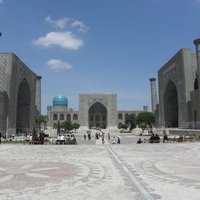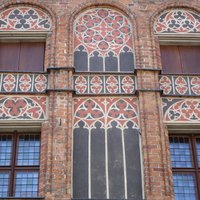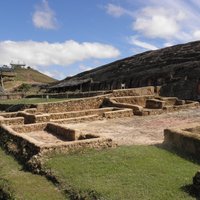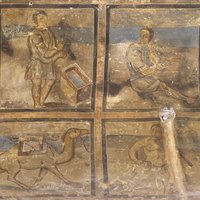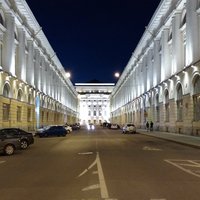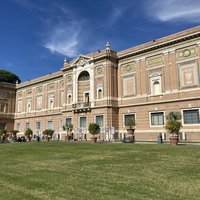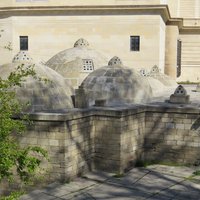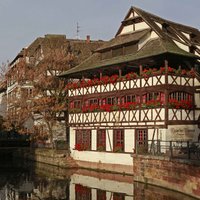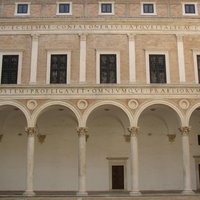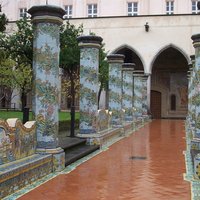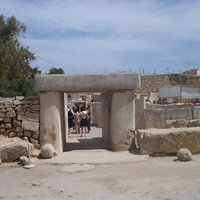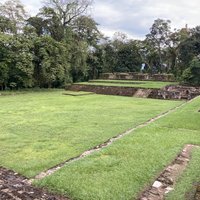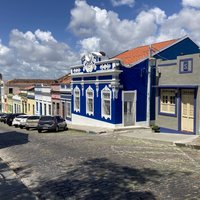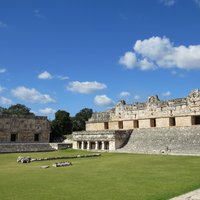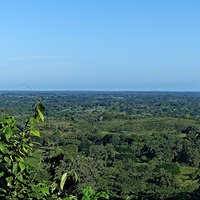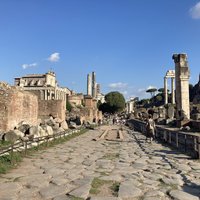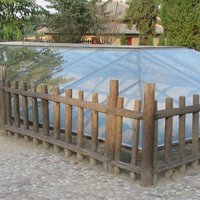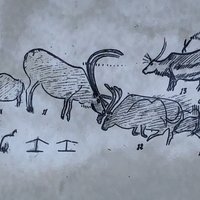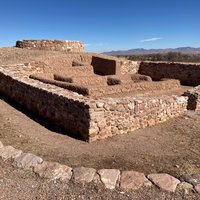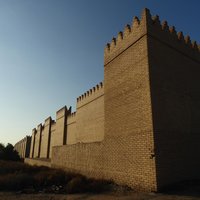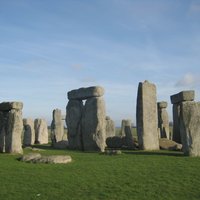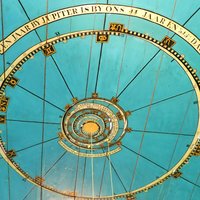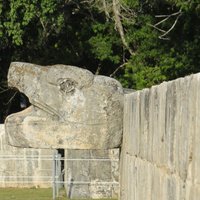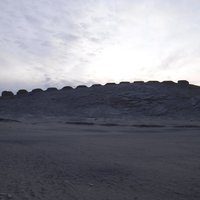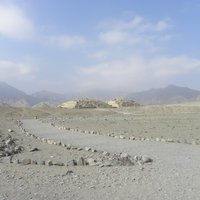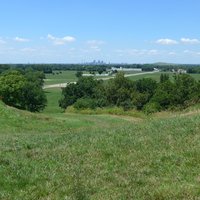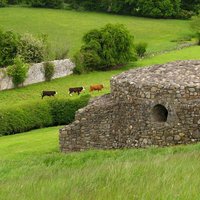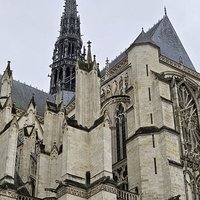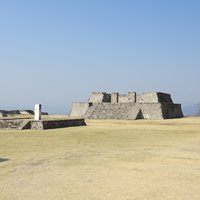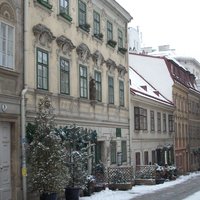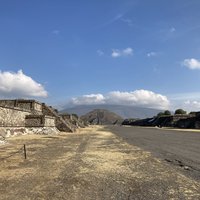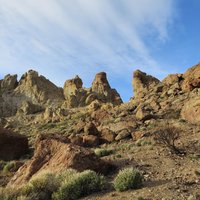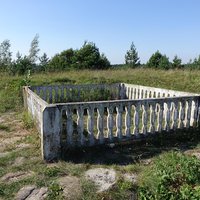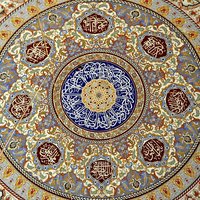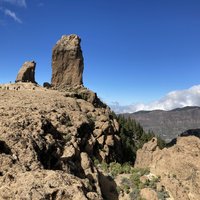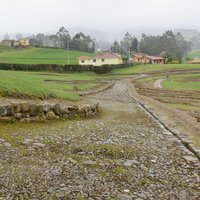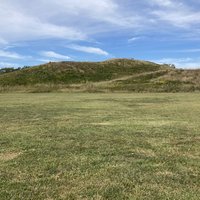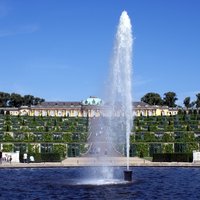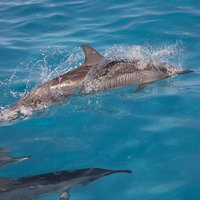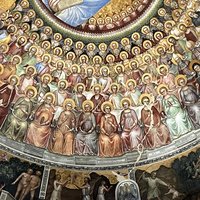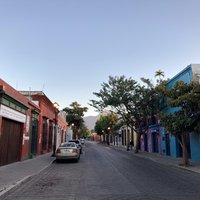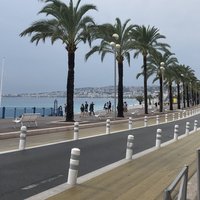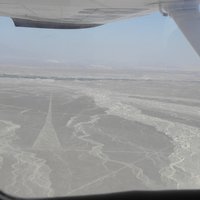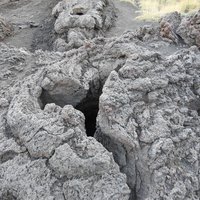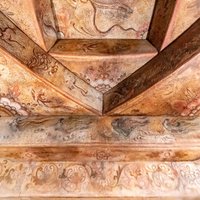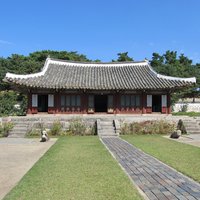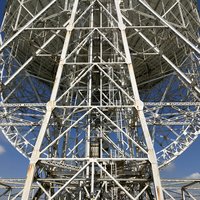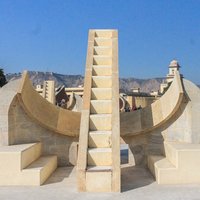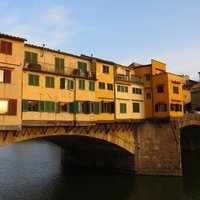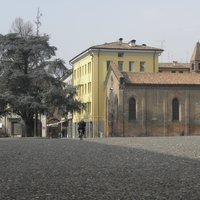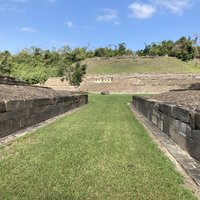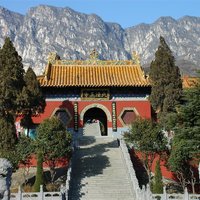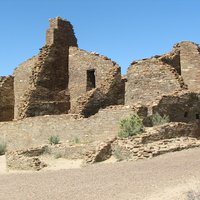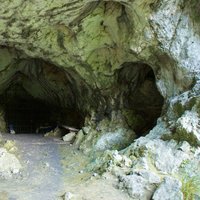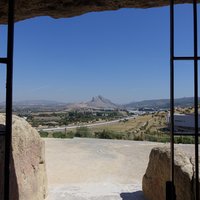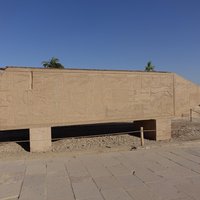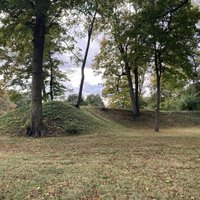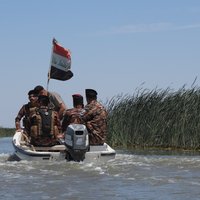Connected Sites
-
-
"house in which Nicolaus Copernicus was reputedly born in 1473; it has been preserved as a museum devoted to the famous astronomer’s life and achievements" (Official description)
-
-
Has a very early Zodiac painted on the ceiling of the dome
-
Pulkovo Observatory (Struve was its first director)
-
The Vatican Observatory is one of the oldest astronomical institutes in the world. In fact, three early observatories were founded by the Papacy: the Observatory of the Roman College (1774-1878), the Observatory of the Capitol (1827-1870), and the Specula Vaticana (1789-1821).
-
"Researchers speculate that the Akapana temple may also have been used as an astronomical observatory. It was constructed so that it was aligned with the peak of Quimsachata, providing a view of the rotation of the Milky Way from the southern pole.[29] Other temples like Kalasasaya are positioned to provide optimal views of the sunrise on the Equinox, Summer Solstice, and Winter Solstice. Although the symbolic and functional value of these monuments can only be speculated upon, the Tiwanaku were able to study and interpret the positions of the sun, moon, Milky Way and other celestial bodies well enough to give them a significant role in their architecture." (wiki)
-
The Maiden Tower possibly was "used as an astronomical observatory from the time of this reconstruction, due to the fact that 30 hewed stone protuberances on the tower's lower section and the 31 protuberances on the upper section, linked with a stone belt, correlate to the days of the month" (wiki)
-
-
-
"William Herschel came to Bath to be the organist at the Octagon Chapel and with his sister, Caroline, lived at Number 19 New King Street where they built their mirrors and telescopes and eventually in 1781 discovered a new planet, Uranus. Caroline was an accomplished astronomer and discovered three new nebulae and eight new comets." (Great Spas of Europe Nomination File, p. 295)
-
There is a small turret on the roof of the Palazzo del Collegio Raffaello, visible from the internal courtyard. It was used as astronomical observatory for the studies and research of Father Alessandro Serpieri.
See it.wikipedia.org
-
-
"(...) professors Frank Ventura and Michael Hoskin and their colleagues proposed that the Maltese temples may have faced the rising and setting of the brightest stars in the constellation of Centaurus, including the Southern Cross, which were clearly visible in the Maltese skies during the period of construction of the temples. This cluster of stars would have formed an impressive procession across the southern sky of the archipelago. This hypothesis, although not universally accepted, could even explain the surprising construction of two twin temples at Ggantija, where the later temple is oriented 9° more to the south than its older sibling." (Talayotic Menorca Nomination file, p. 389-390)
See www.allovergreece.com
-
-
-
The Alto da Sé Astronomical Observatory is an observatory located in the city of Olinda, Pernambuco, Brazil. It was built near the place where, on February 26, 1860, the French astronomer Emmanuel Liais observed and described the comet Olinda (C/1860 D1), being the first comet discovered in South America and in Brazilian territory. (wiki)
See pt.wikipedia.org
-
The so-called Governor's Palace is anomalously oriented regarding other buildings at the site. Its entrance faces ESE-wards towards the most southerly rising point of the planet Venus around the date of its construction (early 10th century); the opposite direction is towards Venus' most northerly setting point. The façade of the building contains iconographic representations of the Venus cycle and of the Mayan zodiac. (...) the iconography places the connections between this building and Venus beyond doubt and the importance of Venus cycles in the Mesoamerican calendar is well attested in ethnohistory. (Chankillo Nomination Text, p. 123-124)
-
astronomical observatory
-
Pantheon: "The monument acts like a giant sundial with a dark interior"
See www2.astronomicalheritage.net
-
Oracle bone inscriptions reveal that the Shang could already record solar and lunar eclipses and star configurations accurately. They also gained a comparatively early understanding of supernova and other astronomical phenomena. (nom file)
-
A number of the Lascaux pictures have a possible astronomical significance
See www2.astronomicalheritage.net
-
The "Mount of the Cross" was erected for solar observations, thus defining the seasons of the year (information panel on site)
-
"it also left a considerable scientific legacy in the fields of mathematics and astronomy" (OUV)
See en.wikipedia.org
-
-
Anse Betsy (Betsy Cove) is a former geomagnetic station on Baie Accessible (Accessible Bay), on the north coast of the Courbet Peninsula (La Grande Terre, Kerguelen). On this site an astronomical and geomagnetic observatory was erected on 26 October 1874 by a German research expedition led by Georg Gustav Freiherr von Schleinitz. The primary goal of this station was the 1874 observation of the transit of Venus. (wiki)
-
"As a technological ensemble, it continues to contribute to the dissemination of astronomical knowledge, and in particular to the understanding of the heliocentric model of the Universe." (OUV)
-
El Caracol: "The structure, with its unusual placement on the platform and its round shape (the others are rectangular, in keeping with Maya practice), is theorized to have been a proto-observatory with doors and windows aligned to astronomical events, specifically around the path of Venus as it traverses the heavens." (wiki)
-
functioned as a calendrical instrument, using the sun to define dates throughout the seasonal year (AB ev)
-
Especially at Chupacigarro
-
Woodhenge: "The circle has been used to investigate archaeoastronomy at Cahokia. Annual equinox and solstice sunrise observation events are held at the site." (wiki)
See en.wikipedia.org
-
A large phallic stone was found in the outskirts of the Great Mound in Knowth. One of the theories suggests that it was used to follow the movements of Venus
-
The Zodiac of Amiens Cathedral is a set of bas-reliefs located on the foundations of the great façade of Notre-Dame Cathedral at the level of the Saint-Firmin portal (north portal, left). It is presented as a series of medallions, sculpted in the form of quatrefoils, and presents an agricultural calendar which establishes a correspondence between the signs of the zodiac and the work of the months.
See fr.wikipedia.org
-
Astronomical observatory: "The observatory is a cave modified to allow study of the movement of the sun. ....In the 105 days running from 30 April to 15 August, the sun shines into the cave. In the sun's movement towards the Tropic of Cancer and upon their return, respectively, on 14/15 May and 28/29 July, the sun is at its zenith and the astronomical noon, the beam of light falls directly through the chimney showing the image of the sun on the floor of the cave. Surely, taking advantage of the solar phenomenon, the site was also used for religious ceremonies." (wiki)
See en.wikipedia.org
-
-
in the case of the Pyramid of the Moon, the public plaza was also used for astronomical observation and calendar-related activities (wiki)
-
Teide Observatory
-
Struve Geodetic Arc
Belarus, Estonia, Finland, Latvia, Lithuania, Moldova, Norway, Russia, Sweden, UkraineInscribed: 200521519Tartu Observatory -
The Muvakkithane (clock house) is located in the northeast corner room ... From here the Muvakkit (timekeepers) prepared the annual calendar and the Ramadan timetable. They also gave basic astronomy lessons when required. (AB)
-
The sky maps of the Basilica of Saint-Sernin in Toulouse are wall paintings representing an astronomical map and a wind map. They have been dated to the 13th century and linked to the beginnings of the University of Toulouse, created in 1229. They bear witness to the transmission, in the Middle Ages, of ancient astronomical science as well as the intellectual life of the basilica. The geocentric map represents the universe in a geocentric vision, as it was imagined since Antiquity and until 1543, when the scientist Copernicus proposed the heliocentric conception.
See fr.wikipedia.org
-
"The sacred site of Caldera de Tejeda reveals the existence of multiple structures ... aligned with the rising and setting sun, particularly at the Summer Solstice and the Equinoxes"
See www3.astronomicalheritage.net
-
Ahu Huri A Urenga: This site near the town of Hanga Roa has a single statue that looks toward the spot where the sun rises on the day of the winter solstice
-
Observatory at Machu Picchu, Lunar calendar at Ingapirca
-
The three main Giza pyramids are orientated to the cardinal directions with extraordinary precision. For such huge monuments, this could only have been achieved by astronomical observation
See www2.astronomicalheritage.net
-
The archaeologist Professor William Haag, who excavated at the site during the 1970s, interpreted this post as having astronomical significance in being aligned to the solstices. (wiki)
-
Babelsberg Observatory
-
Real Observatorio de Madrid
-
"It is significant that most of the heiau have astronomically aligned patterns associated with the summer solstice, when the sun passes through the zenith of the site at noon, and that, according to oral histories, they were the places that held the knowledge of the stars and gave the ancestors their navigational bearings." (Talayotic Menorca Nomination file, p. 368-369)
-
astrological depictions of the months in Palazzo della Ragione
-
Monte Alban: It is believed that building “J” had an astronomical relation/ significance. (wiki)
-
The astronomer Edward Cooper set up Europe's largest astronomical telescope in the park of the Villa Furtado-Heine to make useful observations.
See fr.wikipedia.org
-
Reiche claimed that "the lines were intended to act as a kind of observatory, to point to the places on the distant horizon where the sun and other celestial bodies rose or set at the solstices", later experts in archaeoastronomy, concluded in 1990 that the evidence was insufficient to support such an astronomical explanation. (wiki)
See en.wikipedia.org
-
"The nominated property includes very little infrastructure: ........ and an observatory. Funding has been secured for a complete overhaul of the observatory which is scheduled to start in 2013" IUCN eval
-
OUV Criterion (vi): "Greenwich is associated with outstanding architectural and artistic achievements as well as with scientific endeavour of the highest quality through the development of navigation and astronomy at the Royal Observatory, leading to the establishment of the Greenwich Meridian and Greenwich Mean Time as world standards. "
-
"The orientation of the temple of Prasat Thom does not follow the classical orientation of Khmer temples, but is tilted 13° 77' to the northeast. Considering the importance of Prasat Thom as the state temple of Koh Ker, its orientation contributes to the symbolic, functional, religious and astronomical aspects of city planning. This sacred geometry is also remarkable for its elegance and precision and for its alignment with the solstices and other important naturalistic calendars. This orientation on latitude 13° 44' allows a zenith passage by the Sun on 13th April, is celebrated as the Khmer New Year (Gupta 2020). This integration of the astronomical phenomena with sacred geography reflected in the city planning was the first in Khmer history." (Nomination file, p. 34)
-
There are examples of Goguryeo tombs in which constellations were drawn on tomb ceiling murals. "The wall paintings document the history, religious beliefs, and customs of the contemporary people, as well as science and culture. They show costumes, arms, musical instruments, dance, astronomy, etc." - AB Document
-
The monuments inscribed also include an astronomical and meteorological observatory
-
"illustrates a significant stage in human history (1940s-1960s) – the transition from optical astronomy to radio astronomy and the associated consequence for the understanding of the Universe through multi-wavelength astrophysics" (OUV)
-
It is a collection of astronomical instruments
-
"An important part of this heritage is the celestial knowledge of the shepherds of the Puszta."
See www3.astronomicalheritage.net
-
-
Great Spa Towns of Europe
Austria, Belgium, Czechia, France, Germany, Italy, United KingdomInscribed: 202145817"William Herschel came to Bath to be the organist at the Octagon Chapel and with his sister, Caroline, lived at Number 19 New King Street where they built their mirrors and telescopes and eventually in 1781 discovered a new planet, Uranus. Caroline was an accomplished astronomer and discovered three new nebulae and eight new comets." (Nomination File, p. 295) -
-
The months' hall at the Schifanoia palace is one of the most important astrological representations of Renaissance with the orientalising depictions of the decans and the connections between signs and Olympic gods. It has been the subject of a seminal study by Warburg and his school.
See en.wikipedia.org
-
The 'Pyramid of the Niches', a masterpiece of ancient Mexican and American architecture, reveals the astronomical and symbolic significance of the buildings. (official description)
-
Observatory: "an area to the south of Mount Shaoshi and Mount Taishi, two peaks of Mount Songshan, came to be associated with the concept of the centre of heaven and earth – the only point where astronomical observations were considered to be accurate" (OUV)
-
Pueblo Bonito - layout and astronomical petroglyphs
-
-
Dolmen of Viera "Like most Iberian tombs, it is oriented slightly south of east (96°), situated precisely so that at the summer solstices the sunlight at daybreak illuminates the burial chamber" (Wiki)
-
Tomb at Deir el-Bahari: astronomical ceiling containing the oldest version of an Egyptian celestial diagram ever discovered
See www2.astronomicalheritage.net
-
"Distinct visual interconnections between archaeological sites indicate the existence of social networks, and astronomical orientations imply possible cosmological meanings." (OUV) – "Torre d'en Galmés (...) illustrates the relationship between the landscape and the skyscape where archaeo-astronomical studies have suggested the visual interrelationships between taulas hold symbolic meanings." (AB Ev)
-
"the key attributes of the nominated property are ... the astronomical alignments" (AB ev)
-
Bit Resh in Uruk: "The Bīt Reš along with the Esagila was one of the two main centers of Neo-Babylonian astronomy." (wiki)
-
"It illustrates the development and evolution of optical astronomy in the world between the 19th and early 20th century" (AB ev)

